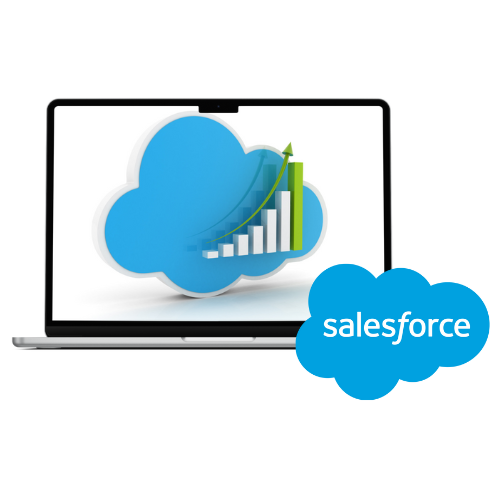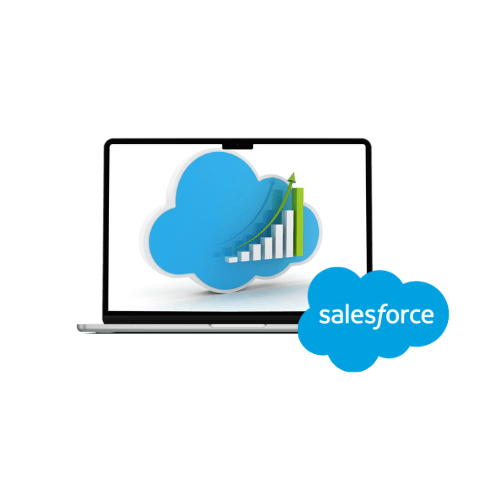Explore Salesforce Workbench, a powerful tool that can streamline your sales management process and increase productivity.
This comprehensive guide will walk you through the intricacies of Salesforce Workbench (SW), empowering you to become proficient in this essential platform.
From understanding the basics to exploring advanced features, this guide has you covered.
We’ll guide you through essential tasks like data manipulation, queries, and bulk data uploads with precision and simplicity.
With detailed instructions and valuable insights, you can streamline your workflow, increase data accuracy, and make informed business decisions.
Whether you’re a sales expert, a Salesforce admin, or a business owner, mastering Salesforce Workbench is crucial to unlocking the full potential of your Salesforce ecosystem.
Let’s dive deeper into how SW can transform your sales management.
Key features and functionalities of Salesforce Workbench
Salesforce Workbench features a diverse range of features and functionality that can significantly enhance your sales management capabilities.
With its user-friendly interface and robust tools, you can easily navigate Salesforce data and perform various tasks with precision and convenience.
A key aspect of Salesforce Workbench is its data change capabilities. You can modify, add and delete records in bulk, simplifying the maintenance and organization of your data.
Whether you’re tasked with changing multiple records or importing data from external sources, Salesforce Workbench streamlines the process, saving you valuable time.
Another powerful attribute of SW is its advanced query and reporting functions. You can run complex queries to retrieve accurate data sets, refine records based on specific criteria, and generate comprehensive reports to gain valuable insights into your sales performance.
This depth of data analysis allows you to make informed business decisions and identify areas for improvement.
Benefits of using Salesforce Workbench for sales management
Using Salesforce Workbench for sales management has numerous advantages that can profoundly influence the success of your business.
By leveraging its features and functionality, you can streamline your operations, increase data accuracy, and ultimately drive sales expansion.
One of the main advantages of SW is the ability to refine your sales procedures. With its data change capabilities, you can effortlessly modify, add, or delete records in bulk, eliminating the need for manual data entry and decreasing the likelihood of inaccuracies.
This simplified data management procedure allows your sales team to focus on their core competency: sales.
Plus, Salesforce Workbench’s sophisticated query and reporting functions allow you to gain valuable insights into your sales effectiveness.
By running complex queries and building comprehensive reports, you can discern patterns, monitor vital metrics, and formulate data-driven resolutions to improve your sales tactics.
This caliber of data analysis allows you to refine your sales workflows and optimize revenue generation.
Getting started with Salesforce Workbench

To commence with Salesforce Workbench, you must possess a Salesforce account and authorization to the Salesforce Workbench tool. Once these prerequisites are met, you can proceed with the following steps to initiate the utilization of Salesforce Workbench for sales administration:
Step 1: Gain entry to Salesforce Workbench: Launch a web browser and navigate to the Salesforce Workbench webpage. Sign in with your Salesforce credentials to access the tool.
Step 2: Navigate through the user interface: Familiarize yourself with the SW user interface. The primary segments comprise “Queries,” “Data,” “Metadata,” and “Utilities.” Each segment offers distinct functionalities and tools for managing your Salesforce data.
Step 3: Explore the “Queries” segment: The “Queries” segment enables you to execute SOQL (Salesforce Object Query Language) queries to retrieve specific data sets. Input your query into the “Enter a SOQL query” field and click “Execute” to view the outcomes.
Step 4: Employ the “Data” segment: The “Data” segment presents various options for manipulating your Salesforce data. You can modify, insert, or erase records in bulk utilizing the pertinent tools in this segment.
Step 5: Utilize the “Metadata” segment: The “Metadata” segment permits you to work with metadata components in Salesforce, such as custom objects and fields. You can retrieve, deploy, or delete metadata utilizing the tools provided.
Step 6: Enhance with the “Utilities” segment: The “Utilities” segment furnishes additional utilities to augment your Salesforce management experience. You can execute tasks such as generating Apex code or fabricating test data using the available tools.
By adhering to these steps, you will be well-equipped to master SW and transform your sales management process.
Data management and manipulation in Salesforce Workbench
Effective data management is crucial to successful sales oversight, and Salesforce Workbench offers a variety of utilities to help you oversee and tune your Salesforce data appropriately.
Whether you need to review existing entries, incorporate new entries, or eradicate obsolete entries, SW simplifies these tasks, allowing you to maintain accurate, current data.
Within the “Data” segment of Salesforce Workbench, you can perform various data administration operations.
The affordable utilities in this segment allow you to review, add, or delete entries in bulk, saving time and energy.
To review entries in Salesforce Workbench, you can use the “Update” utility. This utility allows you to adjust several entries at once, stipulating the fields and values you want to modify.
By designating the entries you want to review and providing the necessary details, you can effectively make changes to your data without the need for manual updates.
If you want to incorporate new entries into Salesforce, the “Insert” utility is indispensable. This utility makes it easy to import data from an external source or manually enter new entries.
By specifying the entity and providing required field values, you can easily attach new entries to your Salesforce repository.
In cases where you need to eliminate outdated or inconsequential entries, the “Delete” utility is invaluable.
By designating the inputs you want to eradicate and corroborating action, you can eliminate unwanted data from your Salesforce system.
By leveraging these data management utilities in Salesforce Workbench, you can expertly manipulate and preserve your Salesforce data, ensuring its accuracy and relevance.
Advanced querying and reporting in Salesforce Workbench

Salesforce Workbench provides sophisticated querying and reporting capabilities, allowing you to gain valuable insights into your sales performance.
By running complex queries and producing comprehensive reports, you can discern patterns, monitor vital metrics, and formulate data-driven decisions to improve your sales tactics.
In the “Queries” segment, you can run SOQL (Salesforce Object Query Language) queries to retrieve accurate sets of data. SOQL is a powerful query language that allows you to search for records based on various criteria, such as object associations, field values, or custom filters.
To run a query, you must enter the desired SOQL query in the field designated “Enter a SOQL query” and select “Run”. The results will be presented in a tabular layout, displaying the fields and records that align with your query parameters.
To further refine your query results, you can employ filters and sorting alternatives.
Salesforce Workbench extends a variety of filtering criteria, including equivalents, disparities, top, bottom, and more.
Additionally, you can organize results by specific fields in ascending or descending sequences.
In addition to querying, it allows you to create comprehensive reports based on your query results.
By selecting the “Export” option, you can transfer your query results to a CSV (comma separated values) file, which can be further examined or imported into other platforms for reporting and visualization.
By leveraging the advanced querying and reporting capabilities of Salesforce Workbench, you can deepen your understanding of sales data, identify trends, and execute informed strategies to drive business expansion.
Customizing SW for your sales team’s needs
Salesforce Workbench features several customization features that allow you to adapt the tool to the different demands of your sales team.
By adjusting settings, creating custom views, and exploring complementary utilities, you can refine Salesforce Workbench to enhance your sales administration.
One method to customize involves adjusting the tool’s settings.
In the “Settings” segment, you can modify preferences such as the number of records displayed per page, timeout duration, and default query settings.
By adjusting these settings, you can adapt Salesforce Workbench to your preferred operating environment.
Another avenue of personalization is the ability to establish personalized perspectives.
In the “Queries” segment, you can preserve your frequently used queries as custom views for quick and easy access.
This functionality allows you to organize your queries and streamline your workflow, saving time and energy while executing queries.
Additionally, Salesforce Workbench extends add-on utilities that can be employed to further customize the tool.
For example, you can generate Apex code using the “Apex Execute” utility, manufacture test data using the “Data Create” utility, or perform other tasks according to your specific requirements.
These utilities offer greater flexibility and customization possibilities to meet the unique needs of your sales team.
By adapting SW to align with your sales team’s prerequisites, you can refine the tool’s functionality and improve your overall sales management process.
Best practices for using Salesforce Workbench for sales management

To optimize the benefits of Salesforce Workbench for sales administration, it’s critical to adhere to top-notch methods that improve your workflow and ensure data accuracy.
By integrating these superior methods into your sales management regime, you can exploit Salesforce Workbench to its fullest capacity.
Mainly, it is critical to maintain data accuracy in Salesforce Workbench.
Consistently evaluate and review your Salesforce data to ensure it is current and relevant.
By performing routine data refinement tasks and ensuring data integrity, you can rely on accurate information to make strategic decisions.
Another excellent practice is to leverage the potential of automation in SW.
Use accessible tools and features to automate recurring tasks, such as data modifications or reporting.
Automation not only saves time but also reduces the risk of errors and ensures uniformity in the sales management approach.
Additionally, it is crucial to institute data governance protocols and processes for your Salesforce environment.
Define lucid roles and obligations for data management, institute security measures to protect sensitive data, and establish data quality standards.
By implementing robust data governance protocols, you can maintain data integrity and adhere to regulatory standards.
Collaboration and communication are also essential best practices when employing Salesforce Workbench for sales management.
Cultivate an environment of collaboration within your sales team, advocating effective communication and the exchange of knowledge.
By leveraging Salesforce Workbench’s collaborative capabilities, such as sharing queries or reports, team members can collaborate more effectively and produce superior results.
Lastly, routinely evaluate and refine your sales management procedures in SW.
Continuously examine data quality, analyze sales performance indicators, and identify areas for improvement.
By consistently reviewing and improving your procedures, you can ensure that SW remains an invaluable asset to your sales team.
Conclusion
Salesforce Workbench is a powerful tool that can revolutionize your sales management process.
With its robust features and functionality, you can streamline your workflow, improve data accuracy, and make more informed business decisions.
However, it is essential to be aware of unnecessary costs associated with Salesforce licenses. Take action now by scheduling a free diagnostic with us at OCS – Org Cost Savings to identify potential savings and optimize your Salesforce expenses.
From understanding the basics to discovering advanced features, this guide has covered everything you need to know about SW.
By following the steps step by step and implementing best practices, you can optimize your sales management process and achieve greater success.
Whether you’re a sales professional, a Salesforce admin, or a business owner, Salesforce Workbench is the key to efficient sales management.


